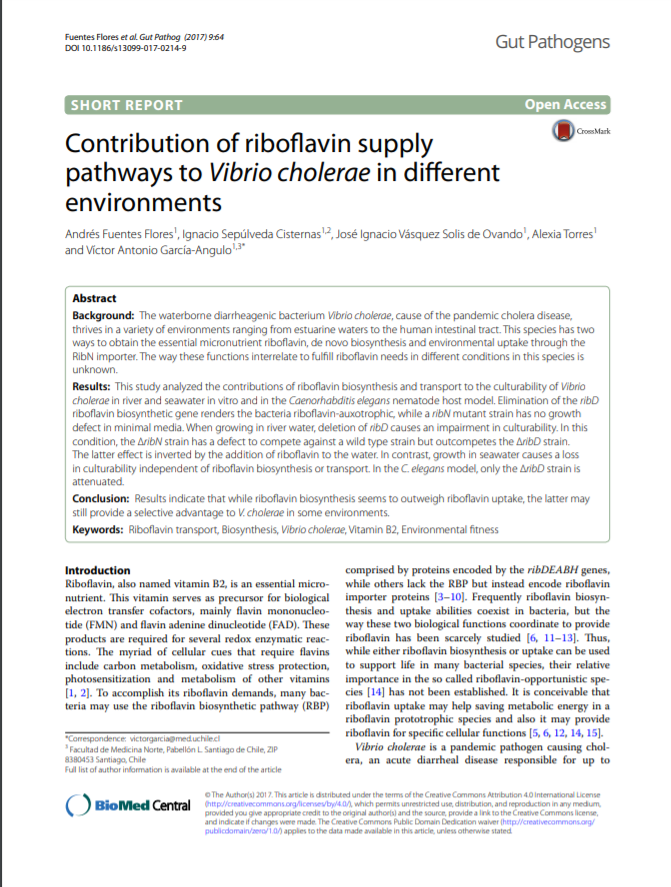Contribution of riboflavin supply pathways to Vibrio cholerae in different environments

Fecha
2017Autor
Fuentes Flores A., Vásquez Solis De Ovando J.I., Torres A., García-Angulo V.A.
Sepúlveda Cisternas, Ignacio [Escuela Biotecnología, Universidad Mayor, Chile]
Ubicación geográfica
Notas
HERRAMIENTAS
Acceda a títulos restringidos
¿Cómo descargar?Resumen
Background: The waterborne diarrheagenic bacterium Vibrio cholerae, cause of the pandemic cholera disease, thrives in a variety of environments ranging from estuarine waters to the human intestinal tract. This species has two ways to obtain the essential micronutrient riboflavin, de novo biosynthesis and environmental uptake through the RibN importer. The way these functions interrelate to fulfill riboflavin needs in different conditions in this species is unknown. Results: This study analyzed the contributions of riboflavin biosynthesis and transport to the culturability of Vibrio cholerae in river and seawater in vitro and in the Caenorhabditis elegans nematode host model. Elimination of the ribD riboflavin biosynthetic gene renders the bacteria riboflavin-auxotrophic, while a ribN mutant strain has no growth defect in minimal media. When growing in river water, deletion of ribD causes an impairment in culturability. In this condition, the Delta ribN strain has a defect to compete against a wild type strain but outcompetes the Delta ribD strain. The latter effect is inverted by the addition of riboflavin to the water. In contrast, growth in seawater causes a loss in culturability independent of riboflavin biosynthesis or transport. In the C. elegans model, only the Delta ribD strain is attenuated. Conclusion: Results indicate that while riboflavin biosynthesis seems to outweigh riboflavin uptake, the latter may still provide a selective advantage to V. cholerae in some environments.
URI
https://link.springer.com/article/10.1186/s13099-017-0214-9https://doi.org/10.1186/s13099-017-0214-9
http://repositorio.umayor.cl/xmlui/handle/sibum/6961
Coleccion/es a la/s que pertenece:
Si usted es autor(a) de este documento y NO desea que su publicación tenga acceso público en este repositorio, por favor complete el formulario aquí.